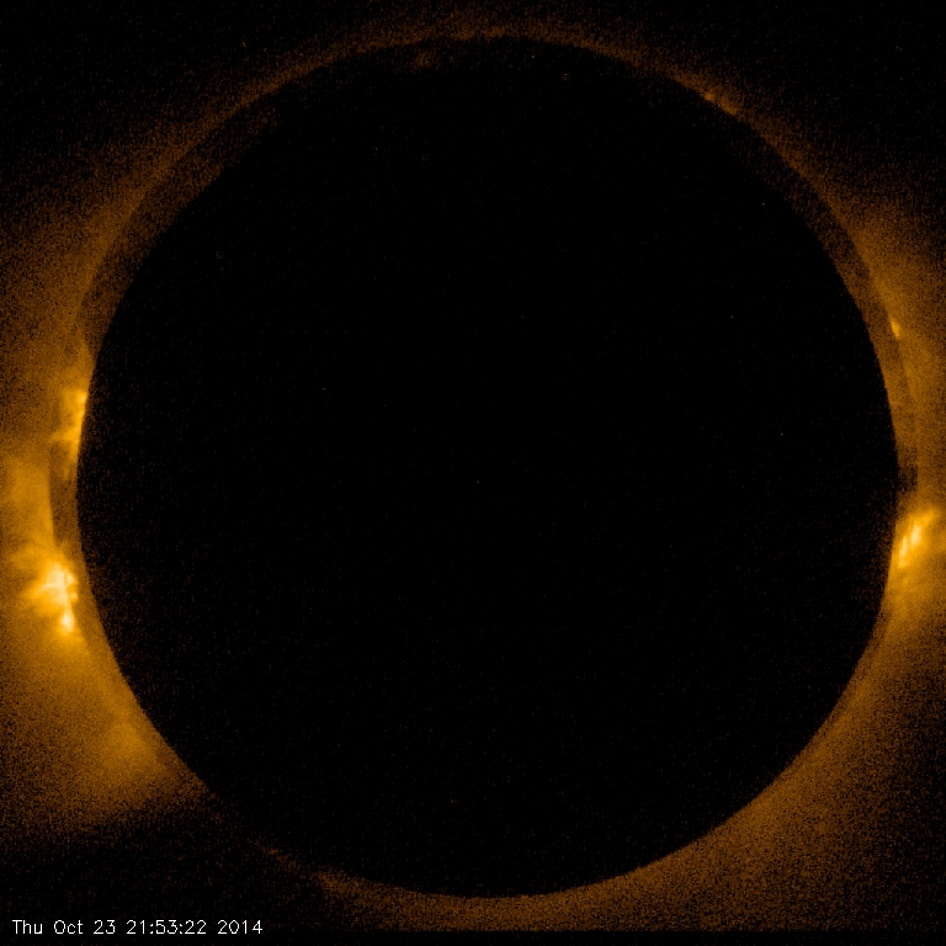Did you catch the solar eclipse on October 23? If so, you saw the Moon “take a bite” out of the Sun (to various extents, depending on your location) during what was a partial eclipse for viewers on Earth. But for the Hinode (pronunciation alert: that’s “HEE-no-day”) solar observatory satellite, in its Sun-synchronous orbit around Earth at an altitude of 600 km (373 miles), the eclipse was annular – a “ring of fire.”
The image above was captured with Hinode’s X-ray Telescope at the moment of maximum annularity. Want to watch it burn, burn, burn like Hinode did? Check out a video below:
Not to be confused with “annual,” meaning yearly, an annular eclipse occurs when the Moon passes directly in front of the Sun but at such a distance from Earth to not quite manage to fully cover the Sun’s disk. The bright ring of visible Sun around the Moon’s silhouette gives the event its name: annular is from the Latin word anulus, meaning ring.
The next annular eclipse to be visible from Earth will occur on Sept. 1, 2016.
Led by the Japan Aerospace Exploration Agency (JAXA), the Hinode mission is a collaboration between the space agencies of Japan, the United States, the United Kingdom, and Europe, and is now in its eighth year. NASA helped in the development, funding, and assembly of the spacecraft’s three science instruments. Learn more about the mission here.
Image and video credits: NASA/JAXA/SAO

